How to Get Rid of June Bugs
Hello, my friend, hello again; today we come together to talk about How to Get Rid of June Bugs and hope the blog can help you.
Don’t let June bugs make a meal of your trees, shrubs, and turf. Learn how to get rid of June bugs and their grubs, and prevent them from coming back.
Despite their name, June bugs (Phyllophaga spp.) are active in adult form in May as well as June. Though the way they clumsily flit around can seem kind of comical, June bugs are no joke to your lawn and garden.
As adults, they feast on the leaves of trees and shrubs—roses are a particular favorite—leaving ragged holes in foliage. But their larval form, called a grub, does the most damage. Grubs live in soil and feed off the roots of plants, especially grass. The result is large brown patches of dead grass that easily separates from the soil in chunks or mats of turf.
You’ll typically see the damage during the late summer when the grubs are most active underground. To ascertain that June bugs are indeed the culprit, simply lift up a section of dead grass: If you see the slightly curled white grubs in the soil underneath, you know what is to blame. Once you’ve identified the problem, you can eliminate June bugs in both their larval and adult stages, often without costly chemical insecticides.
What are June bugs?
What exactly are June bug beetles? June beetles (genus Phyllophaga), also known as June bugs or May beetles, are members of a genus of nearly 300 species belonging to the Scarabaeidae family. They are commonly found across North America during late spring and early summer.
The five most common species of these members of the scarab family are the common June beetle (Phyllophaga crinita), ten-lined June beetle (Polyphylla decemlineata), the green June beetle (Cotinis nitida), the Japanese beetle (Popillia japonica), and the southern masked chafer (Cyclocephala lurida).
Adult June bugs primarily feed on foliage like leaves, flowers, and fruits and, as their name suggests, thrive in June due to warmer temperatures. June is also the mating season for these bugs, which contributes to their increased activity.
RELATED: How to Get Rid of Cucumber Beetles Effectively
How to Identify June Bugs and Their Grubs
To defeat one’s enemy, one must be able to identify him. Similar to other scarab beetles, adult June bugs have these identifiable characteristics:
- An oval shape and six legs with large antennae.
- They measure between 1/2-inch and 1 inch long.
- They are brown, black, or dark red in color.
- Their larvae—grubs—are about 1 inch long, with soft, bulbous, milky white bodies shaped like a “C” with a brown head and three sets of legs.
RELATED: Don’t Kill These 17 Beneficial Insects in Your Garden
Identifying Species of June Bugs
| Type of Bug | Description |
| Common June beetle (Phyllophaga crinitag)
|
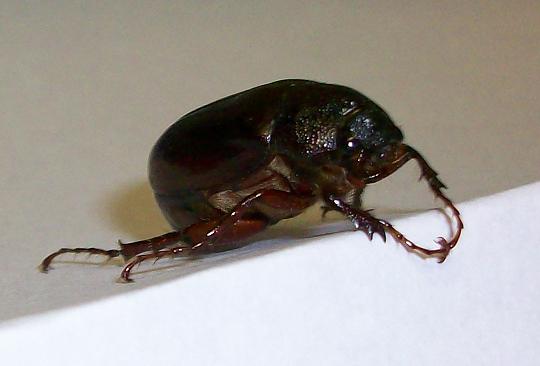
The most common beetle of the scarab family is the common June bug. Measuring 1 to 1 1/2 inches long, this bug features an oval-shaped body, small head, and prominent legs. It is commonly found in North America.
Ten-lined June beetle (Polyphylla decemlineata)
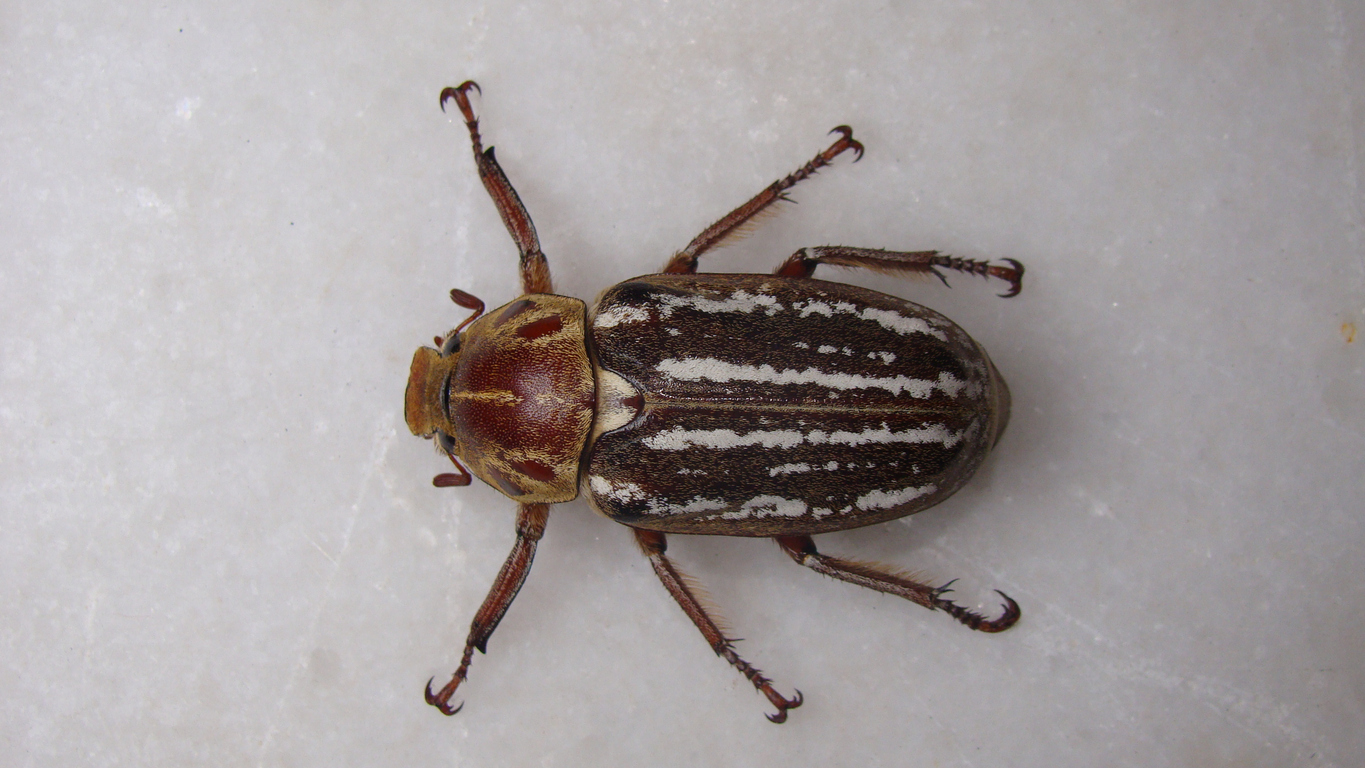
The ten-lined June beetle is found across North America, but is most commonly found in sandy soils. Adult ten-lined beetles feature striking longitudinal white stripes that contrast against its dark brown to black exoskeleton. You can find them near outdoor lighting sources at night.
Green June beetle (Cotinis nitida)
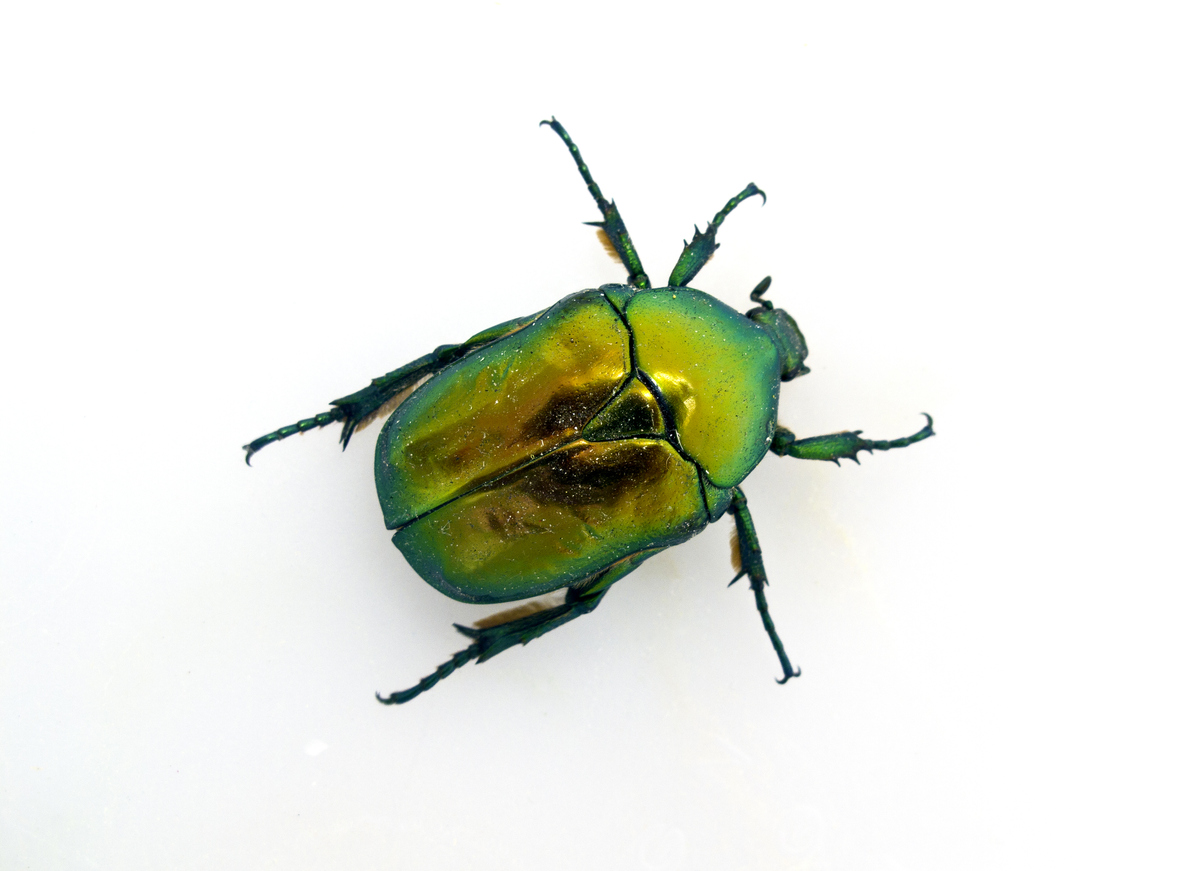
Known for its iridescent and metallic green hue, the green June beetle can measure anywhere from ¼ inch to 2 inches long. This bug enjoys munching on fruit, especially figs.
Japanese beetle (Popillia japonica)
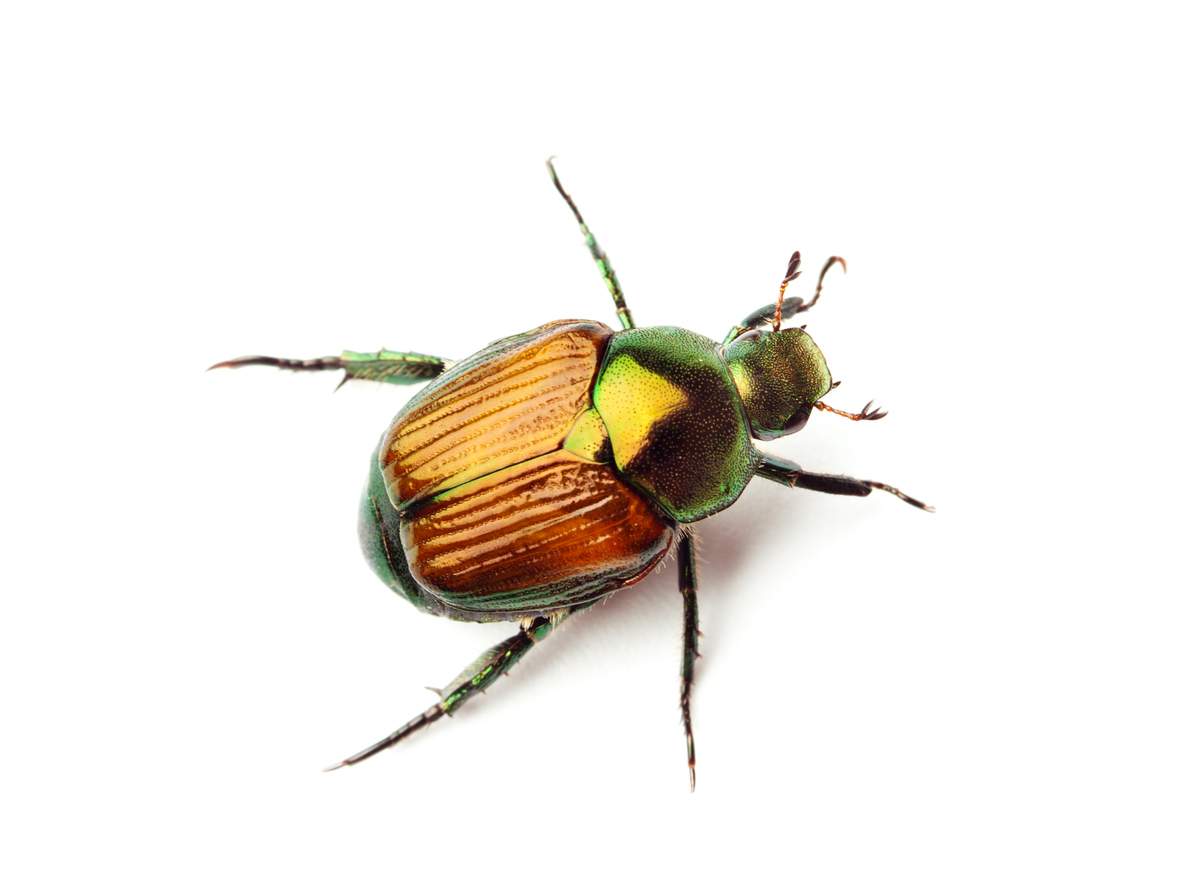
The Japanese beetle is an invasive species in North America and typically measures around ½ inch long. They are known for their vibrant metallic green body and copper-colored wings. These little pests can cause serious damage to your flowers, trees, and other plants, and the larvae (white grubs) usually feed on grass roots, often destroying large grassy areas like parks and lawns.
Southern masked chafer (Cyclocephala lurida)
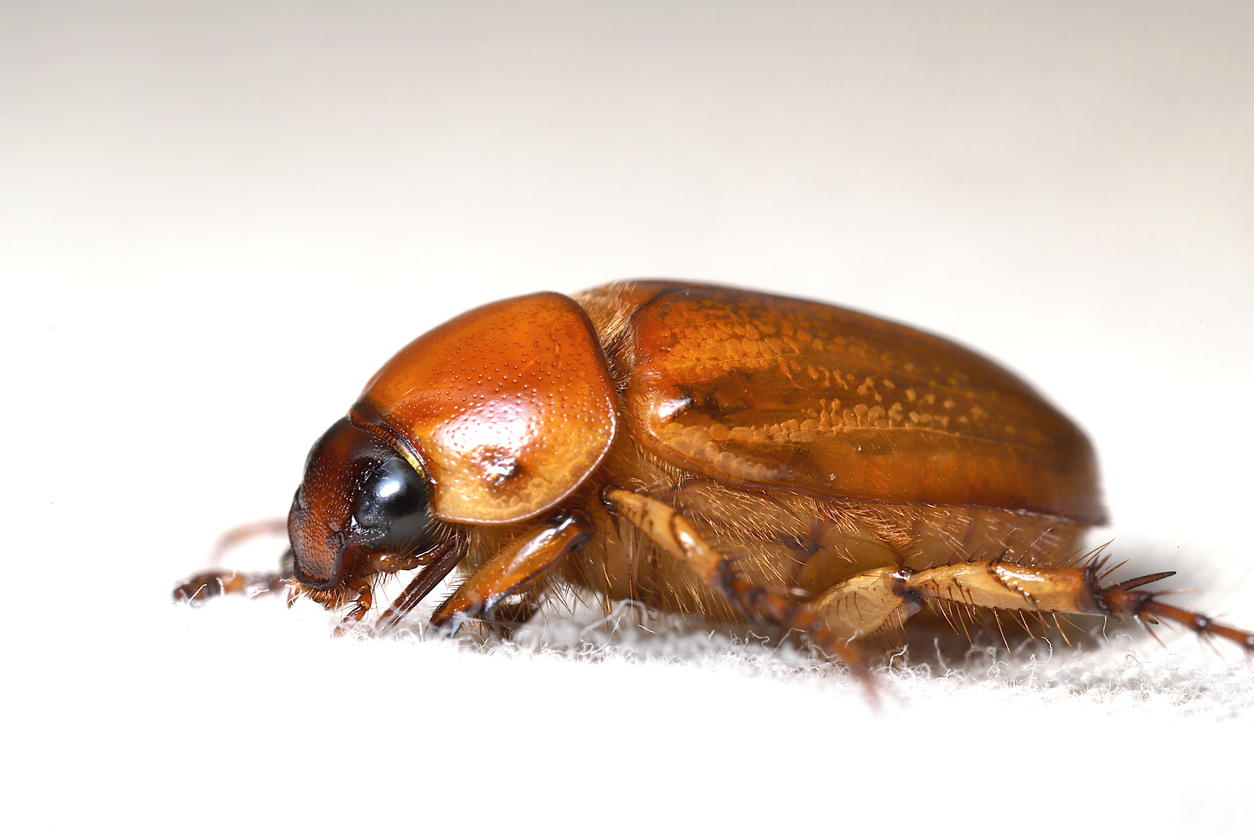
The southern masked chafer have grubs that thrive on turfgrasses. The adults do not typically feed. Adult southern masked chafers have sparse hair and are typically about ½ inch long.
The Life Cycle of June Bugs
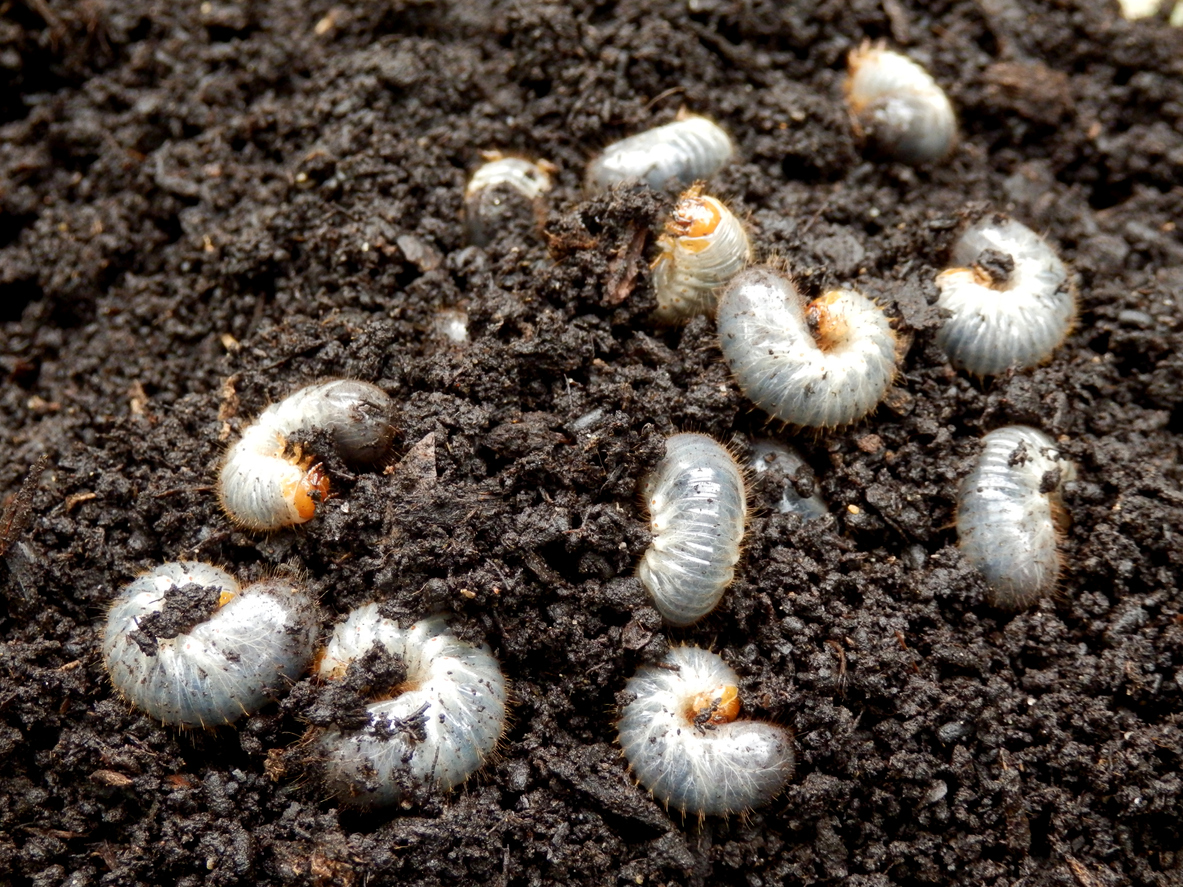
While you might only be focused on one part of a June bug’s life cycle–the end–and thinking to yourself, “How long do June bugs live?” understanding your enemy from cradle to grave is key to eliminating them.
- Female June bugs lay between 50 to 100 eggs in early summer. Larvae come out of the eggs after about 18 days as 1-inch worms with brown heads. Although they are technically babies, this is when they do the bulk of their damage.
- These grubs spend up to three years underground chewing on the roots of your precious plants and grass.
- During the winter they hibernate underground before re-emerging in the spring to continue their feast.
- Eventually they form pupae and hatch into adult beetles in the late spring.
- In late summer, they burrow into the ground to lay their eggs, creating a new generation of June bug grubs to feast on the fruits of your gardening efforts.
- By late fall, the adults begin dying off.
While we associate June bugs with the flying insects we see in the summer, the real culprits are beneath the surface of your yard.
RELATED: 13 Time-Tested Tricks for a Bug-Free Backyard
Causes of June Bug Infestations
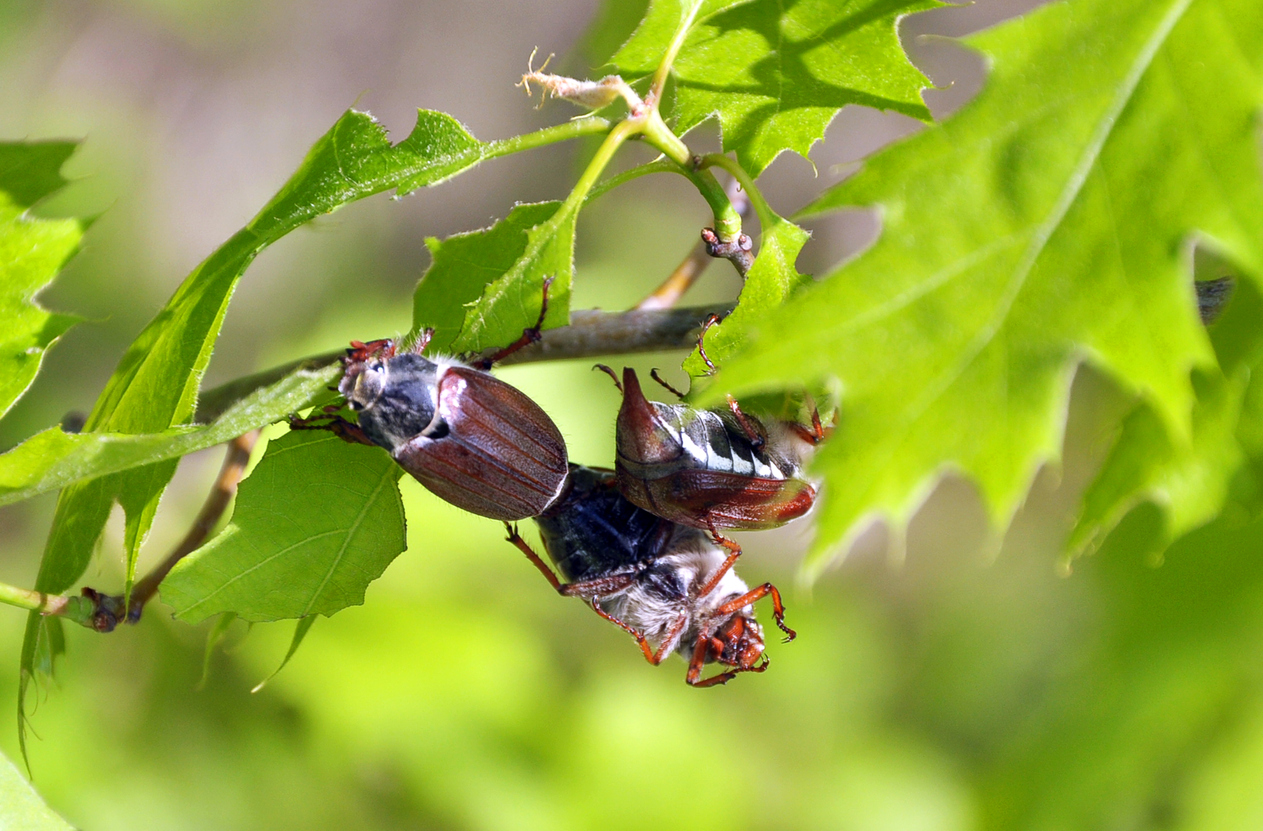
If you have a large infestation of grubs in your yard, you’ll see more adult June bugs in late spring and early summer. While grubs can be attracted to any yard, they thrive in those that are not well maintained.
- Yards with a significant amount of thatch on them help to shield grubs from their natural predators, allowing them to thrive.
- Your efforts to eliminate other insects might also be contributing to their proliferation. Wasps, for example, are natural predators of grubs. By taking out a wasps nest, you might be inadvertently helping your grub population.
- The height of your lawn can also have an impact. Adult June bugs like to lay their eggs in short grass so setting the mower to a low setting might be making it easier for them to multiply.
Tools & Materials
Bobvila.com may earn a commission from purchases made through these links.